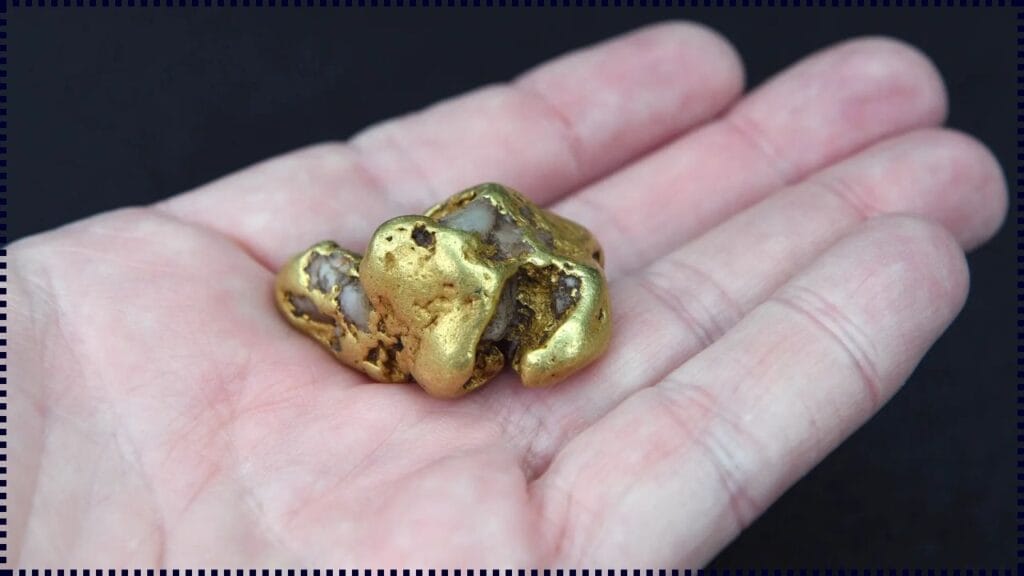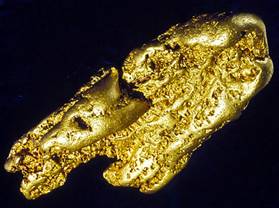This story is a beautiful blend of mystery, science, and pure luck. A gold prospector in Australia made an amazing find: what he initially thought was a huge gold nugget. However, years later, he discovered it was something far more extraordinary: a 4.6-billion-year-old meteorite – a piece of space rock from the very beginning of our solar system!

Yes, you read that correctly. This man had a genuine piece of the solar system’s birth sitting right in his shed. This isn’t just a heartwarming story; it also teaches us valuable lessons. It’s a reminder to stay curious about the world around us, to trust our instincts, and to respect the natural wonders we encounter, even the seemingly ordinary rocks beneath our feet. This discovery shows us that sometimes, the greatest treasures are found when we least expect them.
Man Keeps ‘Gold Nugget’ for Years
| Detail | Info |
|---|---|
| Location Found | Maryborough Regional Park, Victoria, Australia |
| Year of Discovery | 2015 (identified in 2019) |
| Discoverer | David Hole |
| Weight | 17 kilograms (~37 pounds) |
| Type | H5 ordinary chondrite meteorite |
| Scientific Age | ~4.6 billion years |
| Significance | One of only 17 known meteorites in Victoria, second largest by weight |
| Current Status | Preserved at Museums Victoria |
| Cultural Tie-In | Reflects traditional Indigenous views of sky-stones and celestial messengers |
| Official Link | Museums Victoria – Maryborough Meteorite |
Imagine finding a seemingly ordinary, rusty red rock out in the bush. Now, imagine that rock turning out to be an incredibly valuable artifact from the vastness of space history! That’s the amazing story of the Maryborough meteorite. It’s a powerful reminder that sometimes, the wonders of the universe can literally land right in your own backyard.
This story has something for everyone. If you’re someone who loves the thrill of prospecting and finding hidden treasures, it’s a story of incredible luck and discovery. If you’re a science enthusiast fascinated by the mysteries of space, it’s a chance to learn about the incredible journey of meteorites. And even if you just enjoy a cool and inspiring story, this one is sure to capture your imagination and remind you of the magic that exists all around us.
The next time you trip over a strange rock, don’t just kick it aside—you might be holding a piece of the stars.

How a Mistaken Gold Nugget Became a Star of Science
Back in 2015, David Hole was prospecting in Maryborough Regional Park—a historical site for gold miners during Australia’s gold rush. His metal detector picked up something solid. Digging down, he uncovered a reddish, dense rock so heavy and strange that he thought it must be gold encased in iron.
He tried everything to crack it open—hacksaws, grinders, acid baths. Nothing worked. Eventually, he gave up and let the rock gather dust.
But in 2019, curiosity got the best of him. He brought it to Museums Victoria, where researchers quickly identified it as something far more spectacular: a meteorite, likely older than Earth itself.
Why the Maryborough Meteorite Matters
The meteorite turned out to be an H5 ordinary chondrite—a type of stony meteorite loaded with metal flakes and primitive space dust called chondrules. These bits formed in the early days of the solar system, offering scientists an unfiltered look into our galactic past.
“It’s like holding a time capsule from the beginning of our solar system.” — Dermot Henry, Senior Curator of Geosciences
Its density, iron-rich makeup, and hard-to-break crust (called a fusion crust, formed when entering Earth’s atmosphere) confirmed its space origin.
A Native Connection: Sky-Stones in Indigenous Teachings
In Native American cultures, stones that fall from the sky have long held sacred meaning. For example:
- Lakota people view meteorites as messengers or spiritual signals.
- Navajo traditions associate sky-stones with change, transformation, or prophecy.
- Hopi legends speak of stars falling to Earth as signs from ancestors.
This meteorite isn’t just a scientific object—it’s a cultural bridge between past and present, Earth and cosmos.
What Happens to a Meteorite After It Falls?
- Entry: Blazing through the atmosphere, it forms a dark, glassy shell (fusion crust).
- Impact: It slows down and lands—often remaining intact.
- Erosion & Burial: Over decades or centuries, dirt and plant life cover it up.
- Discovery: Curious humans or detectors eventually find it.
The Maryborough meteorite may have landed 100 to 1,000 years ago, based on local fireball sightings and erosion levels.
So, How Much Is It Worth?
While you can’t buy or sell scientific importance, meteorites are in demand among collectors. An iron-heavy space rock of this size and rarity can fetch $100,000 to over $500,000 depending on quality and provenance. But museums and scientists typically don’t place monetary value on such specimens—they’re priceless research tools.
Man Keeps ‘Gold Nugget’ for Years Spot a Meteorite
Think you’ve found something special? Here’s how to check:
Signs It’s a Meteorite:
- Unusually heavy
- Magnetic (most are iron-rich)
- Burned or black exterior
- Uncuttable or spark-producing when hit
It’s NOT a Meteorite If:
- It’s light and flaky
- Crumbles easily
- Has quartz or visible crystals
Educational Impact: Teaching Kids About Space Rocks
The Maryborough meteorite is now used in school science exhibits, museum tours, and online learning modules. This one rock is inspiring thousands of kids to pursue geology, astronomy, and natural sciences.
Interactive Learning Tools:
Related Links
Seniors Stunned by 15% Social Security Cut in June; New Rules Could Hit You Hard
Crypto Blowback: Labor Department Kills Biden’s 401(k) Crypto Guidance in Stunning Move
Famous Meteorite Finds
| Meteorite | Location | Weight | Notes |
|---|---|---|---|
| Hoba | Namibia | 60 tons | Largest meteorite ever found on Earth |
| Allende | Mexico | 2 tons | Contained amino acids—important for life theories |
| Fukang | China | ~1 ton | Stunning crystal structure; popular with collectors |
| Maryborough | Australia | 17 kg (37 lb) | Significant for its location, preservation, and structure |
FAQs
Q: Can I keep a meteorite if I find one?
A: If found on private land, yes. On public land? Depends on your country or state laws.
Q: Do meteorites carry diseases or radiation?
A: No. They’re sterile from deep space. They don’t pose health risks.
Q: Can I sell one?
A: Sure—but scientific specimens are often better preserved for study.
Q: Is it legal to use a metal detector in public parks?
A: Varies by location. Always check with your local authorities or park ranger.








